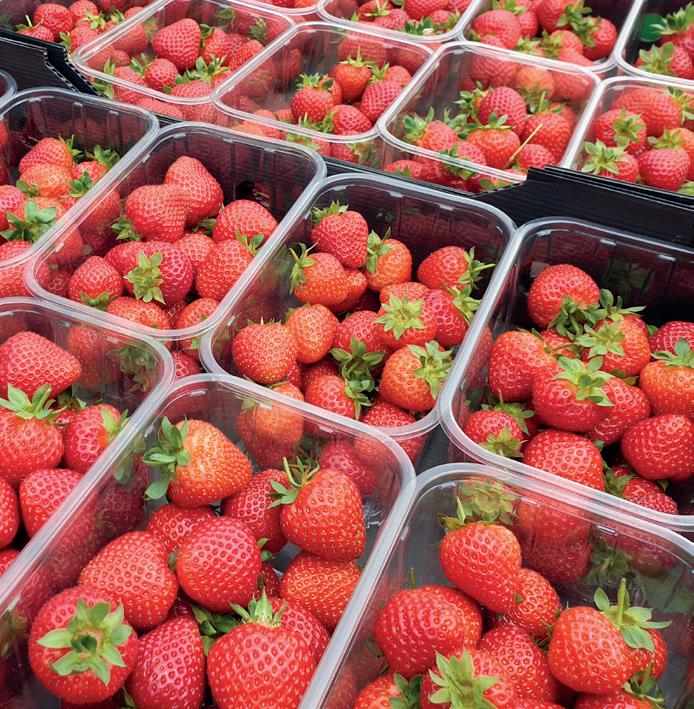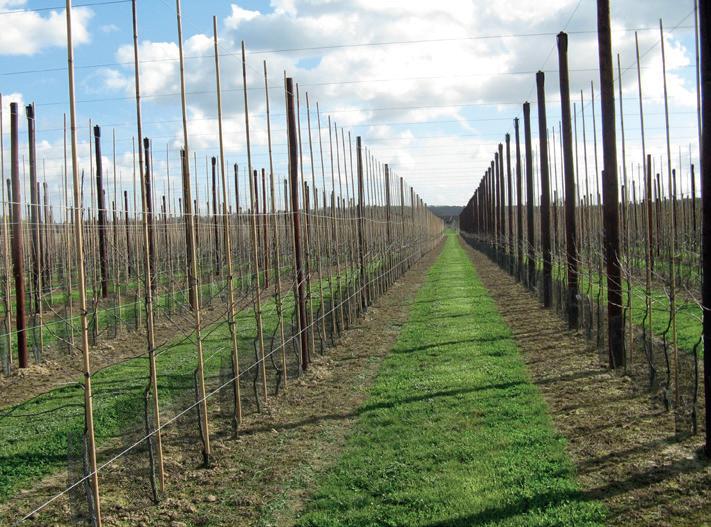
2 minute read
Developing a new strawberry crop forecasting tool

Title: BerryPredictor: Improving harvest forecasts, yield predictions and crop productivity by monitoring and optimising zonal phytoclimates in covered strawberry production
Advertisement
Funder: Innovate UK
Industry partners: Berry Gardens Growers Ltd, Cropdesk Technologies Ltd, Environmental Monitoring Solutions Ltd, SAGA Robotics Ltd, University of Reading, Weatherquest Ltd
Term: December 2019 to November 2022
For several decades, strawberry growers and their marketing groups have been aspiring to develop an improved and accurate method of estimating and forecasting the volume of fruit likely to be available for harvesting over a period of one to two weeks. A better understanding of how much fruit will be available to sell in the coming days will provide a smoother supply chain, reduce waste and reliance on imports, and improve the management of fruit retailing (Figure 1).
The project
This Innovate UK project has brought together a multidisciplinary team of scientists, technologists, meteorologists, and growers to pool their knowledge and skills to develop a new tool which will ultimately be available to strawberry growers. They have been tapping into the recent knowledge gained at NIAB’s WET Centre at East Malling. The project has shown how higher levels of photosynthetic active radiation (PAR) can give rise to higher yields, not only in years like 2020 and 2022 where light levels were unusually high, but also in certain zones of polythene clad tunnel crops, where higher yielding middle rows receive higher levels of PAR compared to lower yielding leg rows.
Temperature also has an impact on yields through berry number and berry size. Leg rows are, on average, half a degree cooler than middle rows and this can give rise to higher fruit fresh weight. In contrast, the centre rows produce more fruit which overall leads to higher yields than in the leg rows. Different phytoclimates within tunnels also affect the rate of ripening and so in the development of a crop forecasting tool, the effects of different phytoclimates in tunnels needs to be accounted for in the total predicted yield for a given area.
Results
BerryPredictor is a science-led forecasting tool based on plant, climate, and data science. Partner scientists at the University of Reading have produced variety specific temporal ripening models, which take into account the effects of temperature on fruit development rate and fruit size. When combined with a 5-day polytunnel “weather forecast” developed by Weatherquest, these models are capable of estimating the ideal ripening/harvest time to within one day for several commercial varieties.
The models are currently being incorporated into the forecasting tool, which also takes account of estimates of fresh weight and fruit number.
Industry partner Cropdesk Technologies Ltd has developed a grower interface for the forecasting tool. They are now extending its capability to take account of intraannual and inter-annual climate variability, the effect of different zonal tunnel phytoclimates and incorporating the impact of events that reduce yield such as heatwaves, variable plant quality, and pest/ pathogen outbreaks.
The work will continue in 2023 at the WET Centre and Cropdesk Technologies Ltd is hoping to launch the new BerryPredictor tool in 2024.









